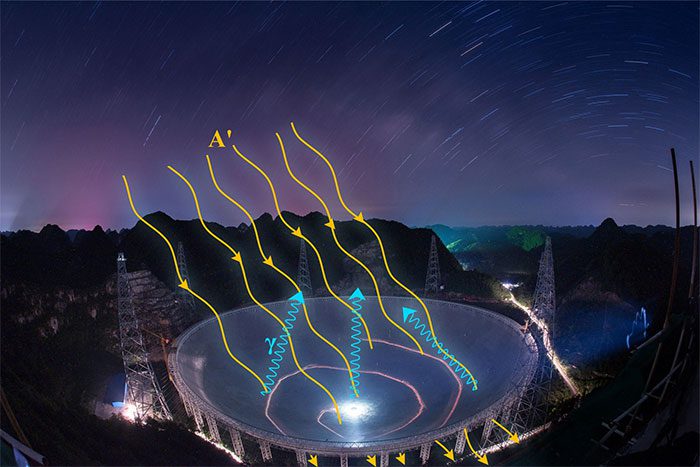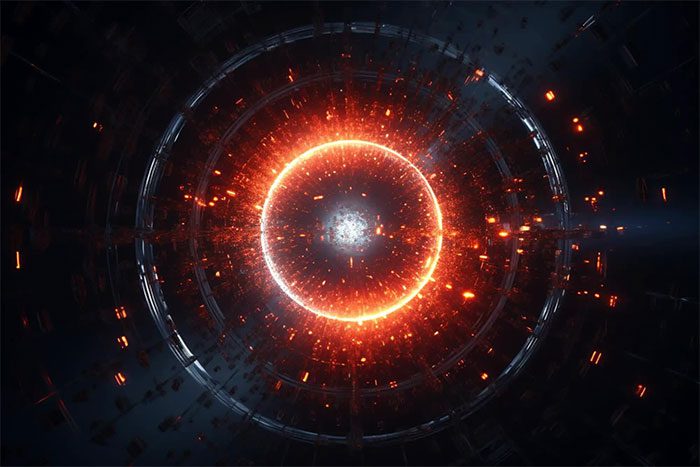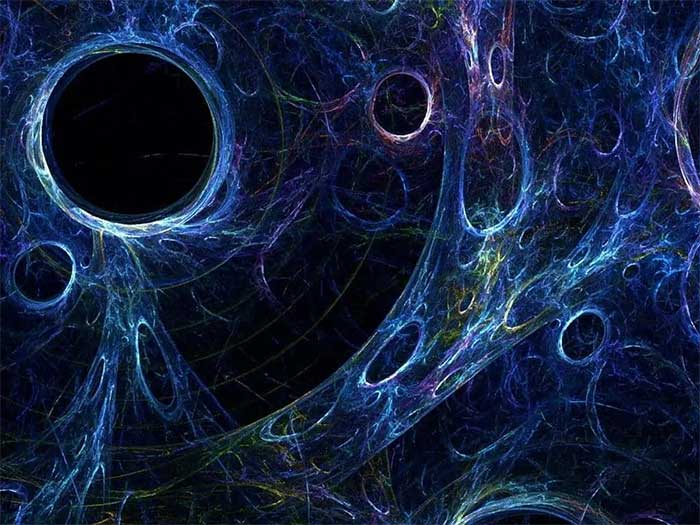New insights into dark matter have emerged as researchers explore the hypothesis of “dark photons,” presenting certain challenges to the Standard Model theory.
Led by experts at the University of Adelaide, an international team of researchers has uncovered additional clues in their efforts to delve deeper into the nature of dark matter.
Professor Anthony Thomas, a physicist at the University of Adelaide, stated: “Dark matter accounts for up to 84% of the matter in the universe, yet we know very little about it.”
“The existence of dark matter has been definitively established through its gravitational interactions; however, its exact nature remains largely unknown despite the tireless efforts of physicists worldwide.”
“The key to understanding this mystery may lie in dark photons, a theoretically massive particle that could serve as a gateway between the shadowy realm of particles and ordinary matter.”

Dark matter constitutes about 85% of the universe; it does not interact with the electromagnetic spectrum, making it invisible to current observational tools, thus becoming the greatest mystery that modern physics must explore. According to dark matter theory, beyond gravity, there must be another unknown force in the universe through which dark matter interacts with visible matter. Researchers speculate that this force is created and transmitted by a bridge known as “dark photons.” (Image: Science Alert).
Dark Photons and Their Significance
Ordinary matter, which makes up us and our material world, is far less abundant than dark matter: dark matter exists in vastly greater quantities than ordinary matter. Understanding dark matter is one of the greatest challenges facing physicists around the world.
Dark photons are hypothesized hidden particles, proposed as force carriers similar to photons of electromagnetism but capable of connecting with dark matter. Testing existing theories about dark matter is one of the approaches being pursued by scientists like Professor Thomas, along with colleagues Professor Martin White, Dr. Xuangong Wang, and Nicholas Hunt-Smith, who are members of the Australian Research Council (ARC) Centre of Excellence.
|
Dark photons are new particles hypothesized to be force carriers for a new force in the dark sector, just as photons are force carriers for electromagnetism. Dark photons and ordinary photons are also thought to mix like various types of neutrinos, allowing extremely light dark matter photons to transform into lower frequency photons. |

Some theories suggest that beyond gravity, dark matter particles may interact with visible matter through a new force that has yet to be detected by science. Just as electromagnetic forces are mediated by photons, this dark force is believed to propagate through a type of particle called “dark photons” – intermediaries between visible matter and dark matter. These “dark photons” could interact with ordinary photons in a process known as mixing, creating effects that are difficult to detect but measurable. (Image: Sci Tech Daily)
Insights from Particle Collisions
Professor Thomas stated: “In our latest study, we examine the potential impacts that a dark photon may have on the full set of experimental results from deep inelastic scattering processes.”
Analyzing the byproducts of collisions between particles accelerated to extremely high energies provides scientists with compelling evidence about the structure of the atomic world and the natural laws that govern it.
In particle physics, deep inelastic scattering is a process used to probe inside hadrons (particularly baryons, such as protons and neutrons), using electrons, muons, and neutrinos.
Professor Thomas mentioned: “We utilized the global analysis framework of the Jefferson Lab’s Global Angular Momentum (JAM) distribution functions, modifying the underlying theory to allow for the possible existence of a dark photon.”
“Our work shows that the dark photon hypothesis is preferred over the Standard Model hypothesis at a significance level of 6.5 sigma, forming evidence for a particle discovery.”
The research team, which includes scientists from the University of Adelaide and colleagues at Jefferson Lab in Virginia, USA, published their findings in the Journal of High Energy Physics.

The energy of these photons was measured and must correspond to the electrons. However, if dark photons exist, they would carry a portion of the energy of the original electron, which the detectors would pick up. Detecting any “dark photons” would mark a significant breakthrough in the quest for dark matter—a pursuit that has often yielded no results despite decades of efforts in the field of physics. (Image: The Brighter Side)


















































